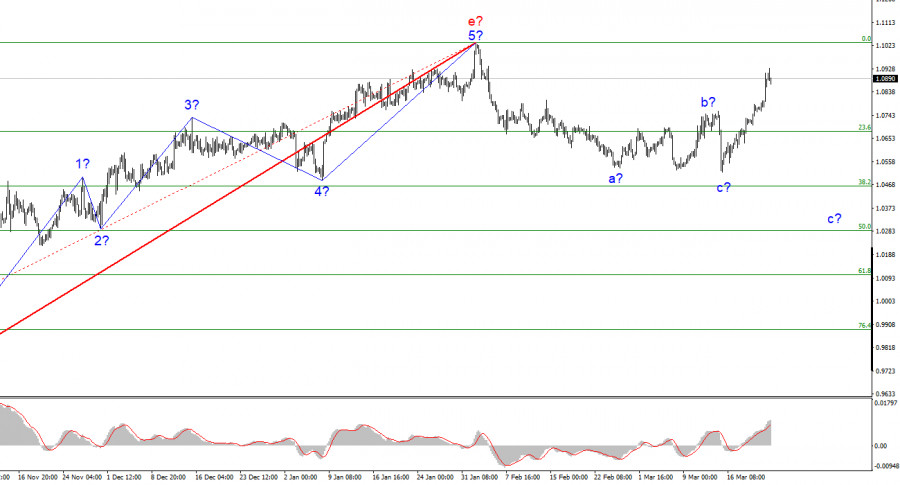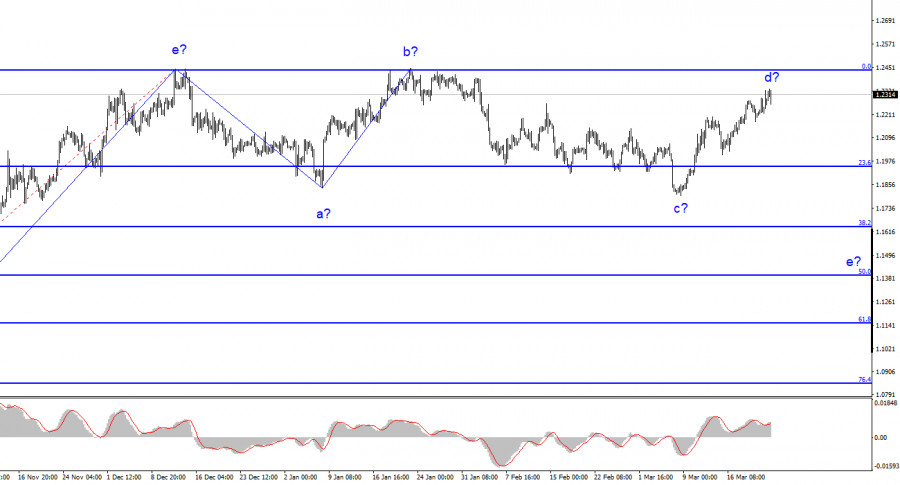In a previous article, I tried to figure out what to expect from central banks in 2023 and concluded that we can expect 2-3 more rate hikes from each of them. And in the case of the Federal Reserve, it may end up with just one more rate hike, despite the fact that 3 weeks ago, Fed Chairman Jerome Powell allowed a few and even hinted at a possible acceleration of the rate hike. However, then the banking crisis started and even if Powell pretended that he did not hint at a tightening in Congress, I can still draw only one conclusion: the Fed had to soften its approach amid the fall of several banks in the U.S. at once. Now the market doesn't seem to be expecting more than another 25 basis points rate hike. Every next meeting could be the last in a cycle of monetary policy tightening.
In the case of the European Central Bank and the Bank of England, the situation is somewhat different. Inflation in the European Union is too high to be limited to just one hike. And in the UK, it is so high that even two or three hikes will not help. Nevertheless, the British central bank has reduced the pace of rate hikes again, making it clear to the market that it is beginning to move away from confrontation with inflation. Frankly, I find it hard to understand the BoE and the ECB's rhetorics. Representatives from each of these banks have been talking intensely about inflation remaining their main concern, but have reduced the pace of monetary tightening to a minimum. This is precisely the case when words and deeds do not coincide. If you could bet on which central bank would get to 2% inflation faster, I would bet on the Fed. And so would the maximum interest rate.

It follows that this year, the rates of all three banks may rise insignificantly, up to 1%. And based on that, it follows that the euro and the pound will not get the news background that could support the construction of a new uptrend. Thus, the answer to the question "how are central banks going to fight inflation further?" In addition to rates, central banks can also start programs to reduce the money supply. Simply put, they could start selling bonds from their accounts. But the ECB, the BoE, and the Fed have already started such programs. It turns out there are simply no other tools besides raising rates. But the ECB and the BoE are getting to the point where the rate stops rising, and the 2% target is still a long way off. I will repeat once again: I don't think such news background should promote the growth of both the euro and the pound.
Based on the analysis, I conclude that the uptrend has been formed. However, the wave pattern of the euro is very confusing, and now it is difficult to say what exactly the trend is. Even after one upward wave (which might be wave b) there might be a new downward three-wave structure. I continue to expect such a scenario. I advise cautious selling with targets near the 38.2% Fibonacci level.

The wave pattern of GBP/USD suggests the construction of a downtrend. At this time, you can consider short positions with targets located near 1.1641, which is equal to a Fibonacci 38.2% reversal of the MACD to the downside. Stop Loss order could be placed above the peaks of waves e and b. I expect the formation of a downward wave e with targets below the current levels by 500-600 points.
The material has been provided by InstaForex Company - www.instaforex.comfrom Forex analysis review https://ift.tt/lZAqv1L
via IFTTT
